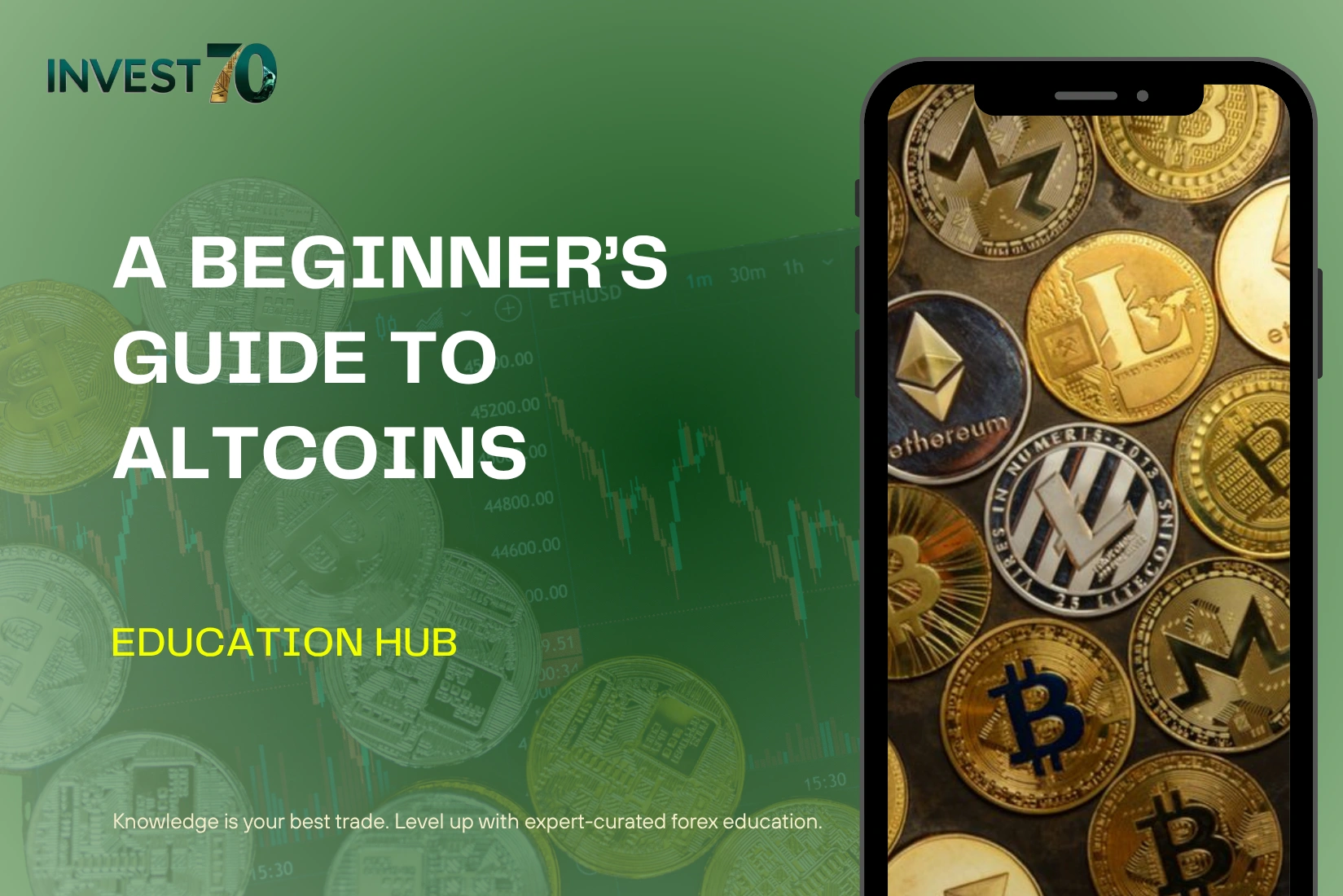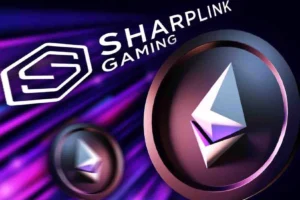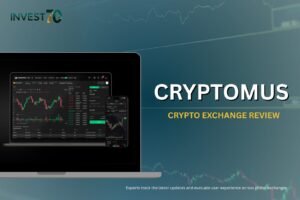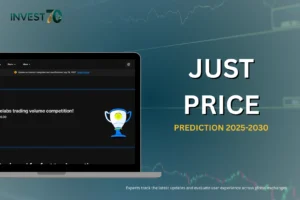A Beginner’s Guide To Altcoins: What They Are, How They Work, and Why They Matter
Understanding Altcoins: Beyond Bitcoin
If you’ve heard of cryptocurrency, chances are you’re already familiar with Bitcoin. But what about all the other digital coins floating around out there—Ethereum, Solana, Cardano, and hundreds more? These are called altcoins, short for “alternative coins,” and they’re changing how people think about the crypto space.
Altcoins are essentially all cryptocurrencies that aren’t Bitcoin. While Bitcoin introduced the world to decentralized currency, altcoins take that idea in new directions. Some aim to improve transaction speed. Others offer advanced smart contract functions. A few are tied to real-world assets or even meme culture. Understanding altcoins gives you access to a much broader world of crypto investing, trading, and innovation.
Why Altcoins Matter in Today’s Crypto Landscape
Altcoins often fill the gaps left by Bitcoin. Bitcoin is secure, but it’s relatively slow and expensive for transactions. Ethereum, an early altcoin, introduced smart contracts—code that runs on the blockchain and allows apps to operate without a central authority. Newer altcoins go further still, supporting privacy features, eco-friendly mining, or lightning-fast payments.
This diversity matters because it opens up new use cases and possibilities. The crypto market is no longer just about storing value—it’s about building decentralized apps, managing digital identity, even issuing loans or playing games entirely on the blockchain.
Altcoins also matter from an investor’s perspective. While Bitcoin still dominates in terms of market value, some altcoins have outpaced it in terms of short-term growth. That potential is what draws in many new investors.
Altcoins vs Bitcoin: What’s the Difference?
At first glance, altcoins might seem like copycats—but they’re often quite different under the hood. Bitcoin’s main goal is to serve as a secure store of value, like digital gold. It’s intentionally simple.
In contrast, many altcoins are experimental. Ethereum introduced a way to build applications on the blockchain. Solana focuses on ultra-fast transactions. Monero emphasizes privacy. Meme coins like Dogecoin play off internet culture while still holding real market value.
The key distinction is that Bitcoin is focused on being money. Altcoins are more about function—what they can do in addition to holding value.
Getting Started: How to Buy Altcoins

Credit from Crypto News
For a beginner, buying altcoins can feel overwhelming—but it’s easier than it seems. First, you’ll need a cryptocurrency exchange. Well-known platforms like Coinbase, Binance, or Kraken support dozens, if not hundreds, of altcoins. Some are global, while others serve specific regions, so always check availability in your area.
Start by creating an account, verifying your identity, and linking a payment method. You’ll typically begin by purchasing a stablecoin like USDT (Tether) or ETH (Ethereum), and then use that to trade for the altcoin you want. Some altcoins can be purchased directly with local currency, but many require this extra step.
Before buying, make sure to research the coin: what it’s for, who created it, and how active its development is. Just because something is trending doesn’t mean it’s sustainable.
Where Can You Store Altcoins Safely?
Once you’ve bought your altcoins, you need somewhere secure to store them. Exchanges offer built-in wallets, which are convenient but not the most secure. For long-term safety, many users move their assets to a personal crypto wallet.
There are two types of wallets:
- Hot wallets, like MetaMask or Trust Wallet, are connected to the internet and useful for daily access.
- Cold wallets, such as Ledger or Trezor, are hardware devices kept offline—ideal for security-focused holders.
For beginners, a hot wallet is fine for small amounts. But as your investment grows, consider switching to a cold wallet for peace of mind.
How to Choose the Right Altcoin to Invest In
Picking an altcoin is like picking a stock—there’s no guaranteed winner. But a few steps can help you make informed decisions.
Start by asking: What problem does this altcoin solve? Who is building it, and is the project actively maintained? Is there a strong community behind it? You should also look into market data: current price, trading volume, supply limit, and recent news.
Websites like CoinGecko and CoinMarketCap are great for initial research. Also, take time to read the project’s whitepaper, if available—it offers insight into the goals and technology behind the coin.
A Beginner’s Guide to Altcoins for Beginners Investing in Altcoins
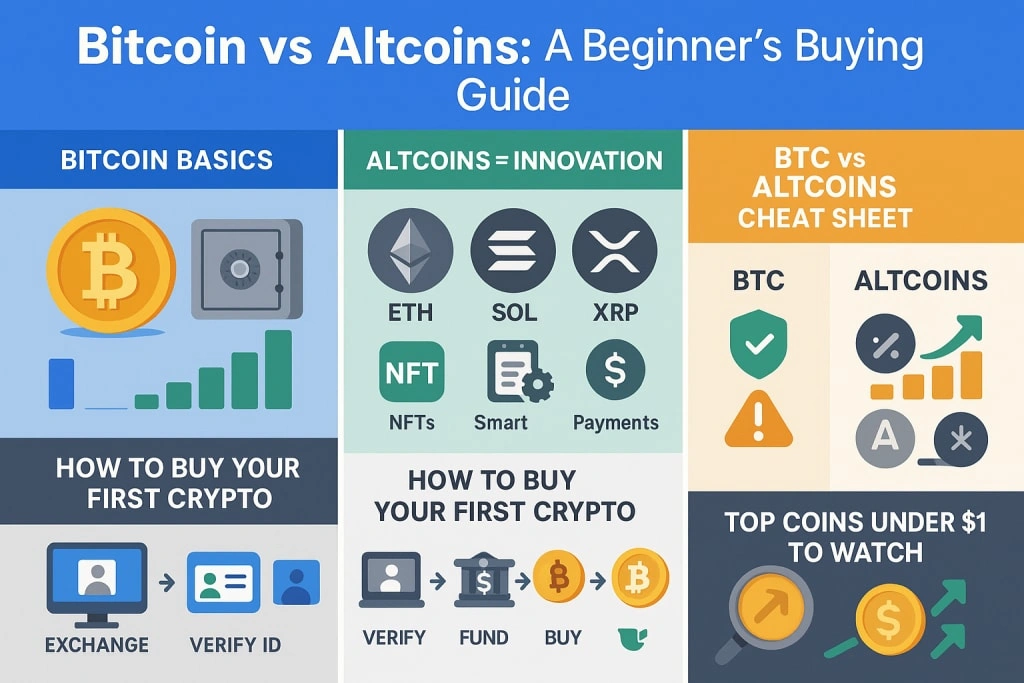
Credit from Vocal Media
It’s tempting to jump into crypto when prices are soaring, but the market is highly volatile. A few key practices can protect you:
- Only invest what you can afford to lose.
- Diversify across several coins rather than going all-in on one.
- Avoid hype-driven decisions—do your own research.
- Stay updated with project news via Twitter, Reddit, and official channels.
- Beware of scams and fake coins. If something sounds too good to be true, it probably is.
Starting small, tracking your progress, and learning as you go is far better than chasing fast profits.
A Beginner’s Guide to Altcoins: Top Altcoins to Watch in 2025
While predictions should always be taken with caution, a few altcoins have captured attention heading into 2025:
- Ethereum (ETH): Still the largest altcoin and vital for smart contracts.
- Solana (SOL): Known for its speed and growing ecosystem.
- Polkadot (DOT): Designed to connect multiple blockchains.
- Chainlink (LINK): Provides data feeds for smart contracts.
- Arbitrum (ARB): A rising player in Ethereum’s Layer 2 scaling solutions.
Each of these coins has a unique role in the broader crypto ecosystem, and tracking them can help beginners learn how altcoin projects develop over time.
A Beginner’s Guide to Altcoins: The Future of Crypto Is More Than Just Bitcoin
Altcoins are reshaping the crypto landscape in real time. For newcomers entering the space, they offer a way to explore the possibilities of blockchain technology, from faster payments to smart contracts and beyond.
This beginner’s guide to altcoins isn’t just about investing—it’s about understanding a world that’s evolving quickly and unpredictably. Whether you’re cautiously exploring your first altcoin or already thinking about portfolio strategy, the key is to stay curious, stay safe, and learn as much as you can along the way.
Remember, while Bitcoin may have started the conversation, altcoins are what’s keeping it going.

